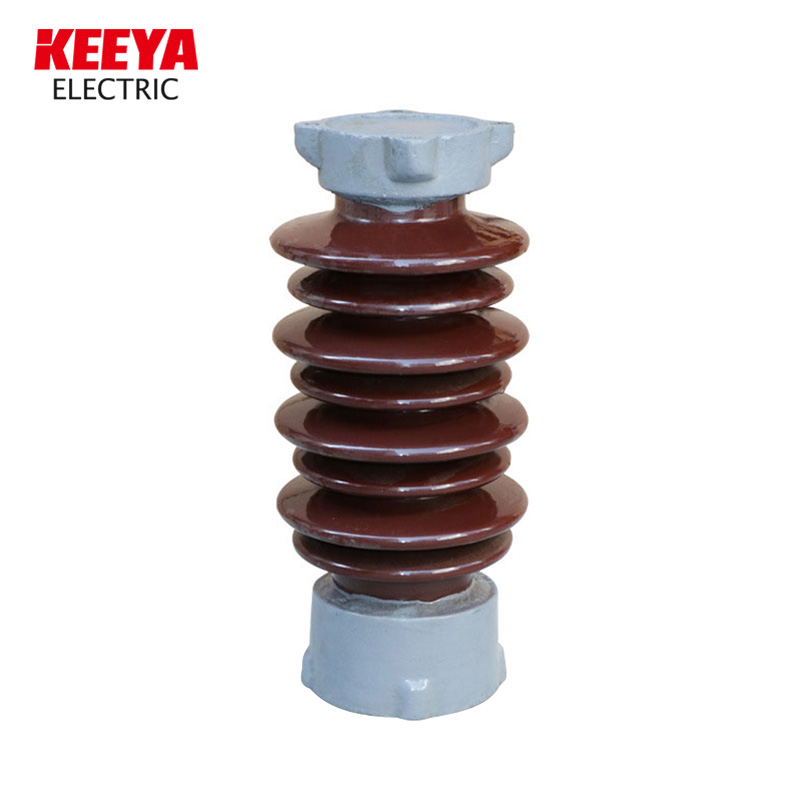Why Are Electrical Insulators Essential for Safe and Efficient Power Transmission?
2024-12-21
Electrical insulators are often the unsung heroes in the world of power transmission, playing a crucial role in ensuring the safety and reliability of electrical systems. But why are electrical insulators so essential for safe and efficient power transmission? In this blog, we’ll explore the importance of electrical insulators, how they work, and the different types available for various applications.
1. What Exactly Is an Electrical Insulator?
An electrical insulator is a material that does not allow the flow of electric current. It is used to support and separate electrical conductors without allowing current to pass through them. Insulators are primarily made of non-conductive materials like ceramic, glass, or composite polymers. They are designed to prevent electrical circuits from coming into contact with conductive materials, thereby avoiding short circuits, electrocution, and damage to electrical equipment.
Electrical insulators are commonly used in power lines, transformers, circuit breakers, and many other electrical devices to ensure that electricity flows safely and efficiently.
2. How Do Electrical Insulators Work?
The primary function of an electrical insulator is to prevent unwanted flow of electricity. When used in power transmission, insulators separate conductors (wires carrying electricity) from one another or from conductive surfaces like metal poles or towers. This ensures that the electricity flows through the intended path — the conductor — without leaking to the surrounding environment or causing short circuits.
Insulators are designed to withstand the mechanical stress placed on them due to environmental factors, such as wind, ice, and the weight of conductors, while also withstanding high voltages. Their non-conductive nature ensures that even when high voltage is present, the electrical current will not flow through the insulator to the tower or ground.
3. Why Are Electrical Insulators Critical for Power Transmission?
- Safety
One of the most important reasons electrical insulators are essential is to ensure safety. Without insulators, power lines could come into contact with trees, buildings, or other objects, causing electrical shocks, fires, or other hazards. Insulators provide the necessary barrier to prevent such dangerous situations.
- Preventing Short Circuits and Power Failures
Electrical insulators also help in preventing short circuits. Short circuits occur when electricity flows along an unintended path, often due to poor insulation. By providing proper insulation, electrical insulators reduce the risk of such failures, improving the overall reliability of the power system.
- Ensuring Efficiency
Efficient power transmission requires that the electrical energy flows along the designed path without loss. Insulators prevent leakage of current, ensuring that energy is transmitted with minimal losses. This leads to more efficient use of electricity, reducing waste and improving the overall performance of electrical systems.
4. What Are the Different Types of Electrical Insulators?
There are several types of electrical insulators, each designed for specific applications and environments. Let’s take a look at the most common types:
- Pin Insulators
Pin insulators are used to support overhead power lines. They are attached to a metal pin, which is then fixed to a utility pole. These are most commonly used in medium-voltage power transmission systems.
- Suspension Insulators
Suspension insulators are used for high-voltage transmission lines. They consist of multiple discs or rings of insulating material, which are strung together to support the conductor. This type of insulator can handle greater mechanical stress and high voltages.
- Strain Insulators
Strain insulators are designed to withstand mechanical tension. They are used where there are high mechanical stresses on the transmission lines, such as at corners or at the end of a line where the wires are under tension.
- Dead-end Insulators
These insulators are used at the end of the line or where conductors are anchored. They support the line and provide insulation to prevent current from escaping at the termination point.
- Composite Insulators
These are made from a combination of materials, such as polymers, and are typically lighter and more resistant to pollution and environmental factors. Composite insulators are gaining popularity due to their durability and high performance in challenging conditions.
5. How Do Electrical Insulators Contribute to Sustainability?
- Longevity and Durability
Electrical insulators, especially those made from ceramic or composite materials, are designed to last for decades. Their long lifespan reduces the need for frequent replacements, contributing to sustainability by minimizing waste and reducing the environmental impact of manufacturing and disposal.
- Reduced Energy Loss
As insulators help to maintain the integrity of power transmission lines, they reduce energy losses caused by leakage. This efficiency translates into less energy being wasted, helping reduce the overall carbon footprint of electricity generation and transmission.
- Recyclability
Certain types of electrical insulators, such as those made from composite materials, are recyclable, reducing the environmental impact of old or damaged insulators. This aligns with global sustainability goals, helping utilities reduce their ecological footprint.
6. What Are the Challenges of Using Electrical Insulators?
While electrical insulators play a vital role in power transmission, there are challenges associated with their use:
- Environmental Exposure
Insulators are exposed to various weather conditions, such as extreme heat, cold, and pollution. Over time, exposure to these elements can degrade the insulator’s effectiveness, requiring regular maintenance and inspection.
- Cost and Installation
High-quality insulators can be expensive, especially those designed for high-voltage or challenging environments. The installation and maintenance of these insulators can also add to the cost of power transmission systems.
- Maintenance and Monitoring
To ensure their reliability, insulators must be regularly inspected and maintained. In areas with high pollution or extreme weather conditions, insulators may require more frequent cleaning or replacement to ensure optimal performance.
Final Thoughts
Electrical insulators are an integral part of modern power transmission systems, ensuring safety, efficiency, and reliability. Their ability to prevent electrical leaks, reduce energy loss, and protect power lines from external factors makes them crucial in the safe delivery of electricity. Whether in power plants, industrial applications, or residential systems, electrical insulators help create a safer and more efficient electrical infrastructure.



